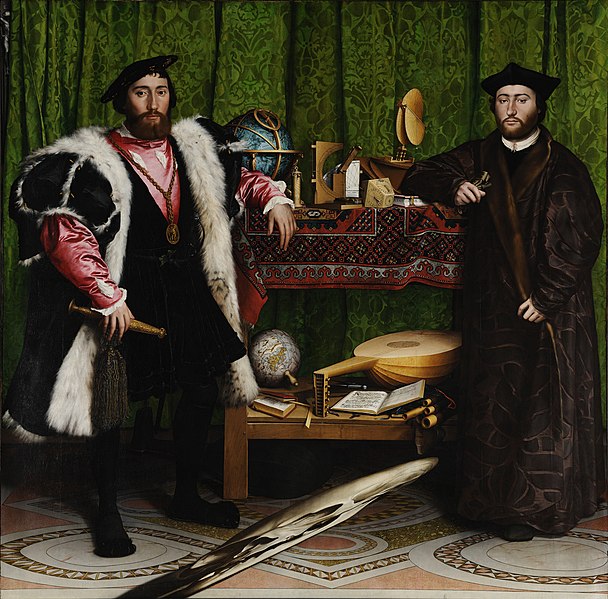You've probably seen this painting making the rounds on optical illusion websites:
It's become popular lately thanks to Google Art Project, the first attempt at putting high quality scans of paintings online for access. The curiosity value, of course, comes from the distorted view of the object in the extreme lower foreground, which resolves to a skull when viewed at the right angle:
In itself, the anamorphic perspective of the familiar momento mori technique is a splashy, attention-calling element. But why spoil an otherwise excellent Renaissance work, filled with masterful technique, with such a tacky carnival trick? Art scholars argue this motivation even today.
The rest of the painting is a double portrait, showing a kind of duality between the church and science. There is a cleric to the right and a merchant to the left. The objects scattered about the table between them continues this theme. In fact, like a David Lynch movie, the painting has various symbolic elements which are open to conflicting interpretations. But of course, like a car honking its horn, that stretched-out skull keeps distracting us.
Could it be that he was thumbing his nose at whomever commissioned the work? Was he adding the skull as a way of saying "this whole painting is a joke; don't take it seriously!" Was it to impress a certain person? Did he add this to cover up some mistake in the background? Is it perhaps a pointer to other thematic clues elsewhere in the painting? Is there some significance to where the painting would have originally have been hung - such as on the right-hand wall of a staircase near the bottom?
History may never know the motives of 16th-century Northern Renaissance painter Holbein.


